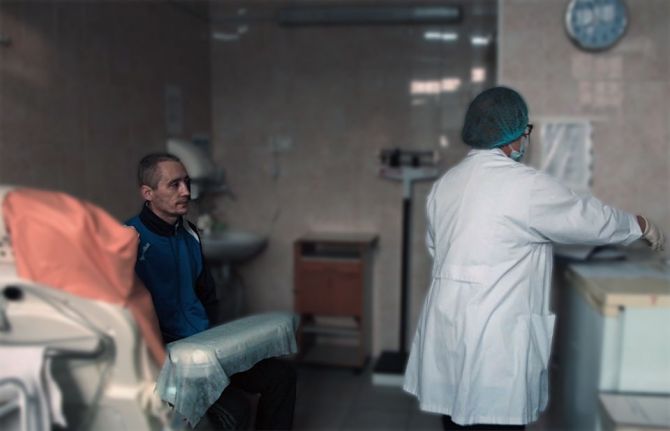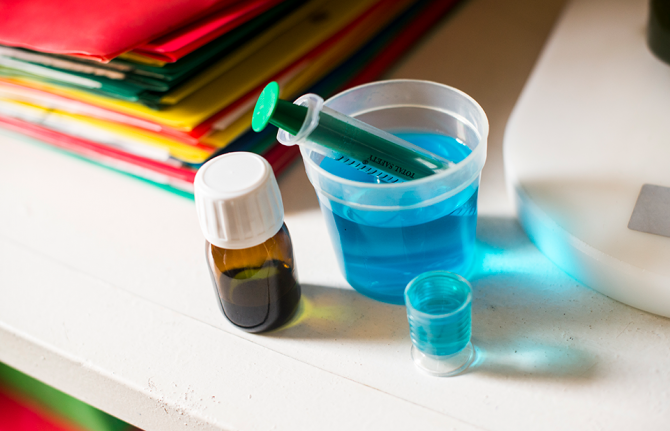



Press Release
UNAIDS calls for access to HIV prevention, treatment and care in prisons, including access to life saving harm reduction services
07 May 2023 07 May 2023Harm reduction policies and practices help people who are using drugs to stay alive and protect them from HIV and Hepatitis C
Released ahead of International Harm Reduction Day - 7 May 2023
GENEVA, 5 May 2023—Many prison systems are struggling to cope, with overcrowding, inadequate resources, limited access to healthcare and other support services, violence and drug use. In 2021, the estimated numbers of people in prisons increased by 24% since the previous year to an estimated 10.8 million people, increasing the strain on already overstretched prison systems.
Drug use is prevalent in prisons. UNAIDS Cosponsor, the United Nations Office on Drugs and Crime (UNODC), estimates that in some countries up to 50% of people in prisons use or inject drugs. Unsafe drug injecting practices are a major risk factor for the transmission of HIV and hepatitis C due to limited access to harm reduction services, including condoms, clean needles and syringes, and a lack of comprehensive drug treatment programs, particularly opioid agonist therapy.
People in prison are 7.2 times more likely to be living with HIV than adults in the general population. UNAIDS reports that HIV prevalence among people in prisons increased by 13% since 2017, reaching 4.3% in 2021. Although data are limited, it is thought that around one in four of the total prison population has hepatitis C.
“Access to healthcare, including harm reduction services, is a fundamental human right, and no one should be denied that right because they are incarcerated,” said Eamonn Murphy, UNAIDS Regional Director for Asia Pacific and Eastern Europe and Central Asia. “Prisons are too often ignored in countries' efforts to respond to HIV. A multisectoral, multifaceted approach is urgently needed to save lives, which includes access to clean needles and syringes, effective treatment for dependence on opioid drugs and reducing stigma and discrimination.”
Both drug use and HIV infection are more prevalent among women in prison than among imprisoned men. In particular, women who use drugs and sex workers are overrepresented in prisons. Highlighting the urgent need to scale up the implementation of community-led harm reduction services for women who use drugs and women in prison.
Ms Ghada Waly, Executive Director of UNODC, said, “It is time to put compassion at the heart of our responses. To take a more serious look at de-penalization and alternatives to incarceration for minor drug offenses, focusing instead on treating and rehabilitating. To use a gender-sensitive lens when looking at women and girls who use drugs, and to ensure that they have equal access to treatment. To reach out to young people, who are using drugs more than ever before, understand their vulnerabilities to substance abuse, and help them be part of the solution. To stand with marginalized and vulnerable people, including people in prisons who are underserved by treatment programmes, and people who inject drugs, who are far more likely to be living with HIV, yet far less likely to access life-saving services”.
Among the countries reporting on prisons to UNAIDS in 2019, just 6 of 104 countries had needle and syringe programmes in at least one prison; only 20 of 102 countries had opioid substitution therapy programmes in at least one prison, 37 of 99 countries had condoms and lubricants in some prisons.
UNAIDS, UNODC, and WHO have long supported expanding harm reduction services to all prisons. However, according to Harm Reduction International, only 59 countries globally provide opioid agonist therapy in prisons.
Some countries have made huge progress in recent years. Despite the challenges faced by the influx of refugees and the repercussions of the war in Ukraine, Moldova, (which has an HIV prevalence of 3.2% in its prisons, compared to 0.4% among the general population) has committed significantly more resources into its prison systems.
In the early 2000’s few of its prisons provided harm reduction services. Today all of the country’s 17 penitentiaries provide harm reduction services including, methadone (an opioid agonist therapy), access to psychiatrists, doctors and treatment programmes, needle and syringe exchange and HIV prevention, testing, treatment and care.
Svetlana Plamadeala, UNAIDS Country Director in Moldova said, “It’s about putting people front and center, treating them as equals and taking on a solid, public health approach, grounded in human rights and evidence.”
UNAIDS, UNODC, UNFPA, WHO, ILO and UNDP recommend 15 comprehensive and essential interventions to save lives and ensure effective HIV programming in prisons. These include HIV prevention, testing and treatment, condoms, lubricant, opioid agonist therapy and post-exposure prophylaxis. However, this is only part of the solution. UNAIDS also recommends that countries amend their laws to decriminalize the possession of drugs for personal use.
UNAIDS has set ambitious targets for 2025 which include: 95% of people in prisons and other closed settings who know their HIV status, 95% who know their status are on treatment; and 95% on treatment are virally suppressed; 90% of prisoners used condoms at last sexual activity with a non-regular partner; 90% of prisoners who inject drugs used sterile needles and syringes at last injection; and that 100% of prisoners have regular access to appropriate health system or community-led services.
UNAIDS advocates that communities take an active role in planning, providing and monitoring HIV services. However, this is not always facilitated in prison settings. Without community engagement it will be impossible to reach the global AIDS targets.
For more information on Moldova’s work on HIV in prisons please read Moldova expands harm reduction services to all prisons and watch https://youtu.be/JQYtnsiJKs0
Fact sheet: UNAIDS Human rights fact sheet on HIV in prisons
UNAIDS
The Joint United Nations Programme on HIV/AIDS (UNAIDS) leads and inspires the world to achieve its shared vision of zero new HIV infections, zero discrimination and zero AIDS-related deaths. UNAIDS unites the efforts of 11 UN organizations—UNHCR, UNICEF, WFP, UNDP, UNFPA, UNODC, UN Women, ILO, UNESCO, WHO and the World Bank—and works closely with global and national partners towards ending the AIDS epidemic by 2030 as part of the Sustainable Development Goals. Learn more at unaids.org and connect with us on Facebook, Twitter, Instagram and YouTube.
Contact
UNAIDS GenevaCharlotte Sector
tel. +41 79 500 8617
sectorc@unaids.org
UNAIDS Eastern Europe and Central Asia
Snizhana Kolomiiets
kolomiietss@unaids.org
UNAIDS Geneva
Sophie Barton Knott
tel. +41 79 514 6896
bartonknotts@unaids.org
